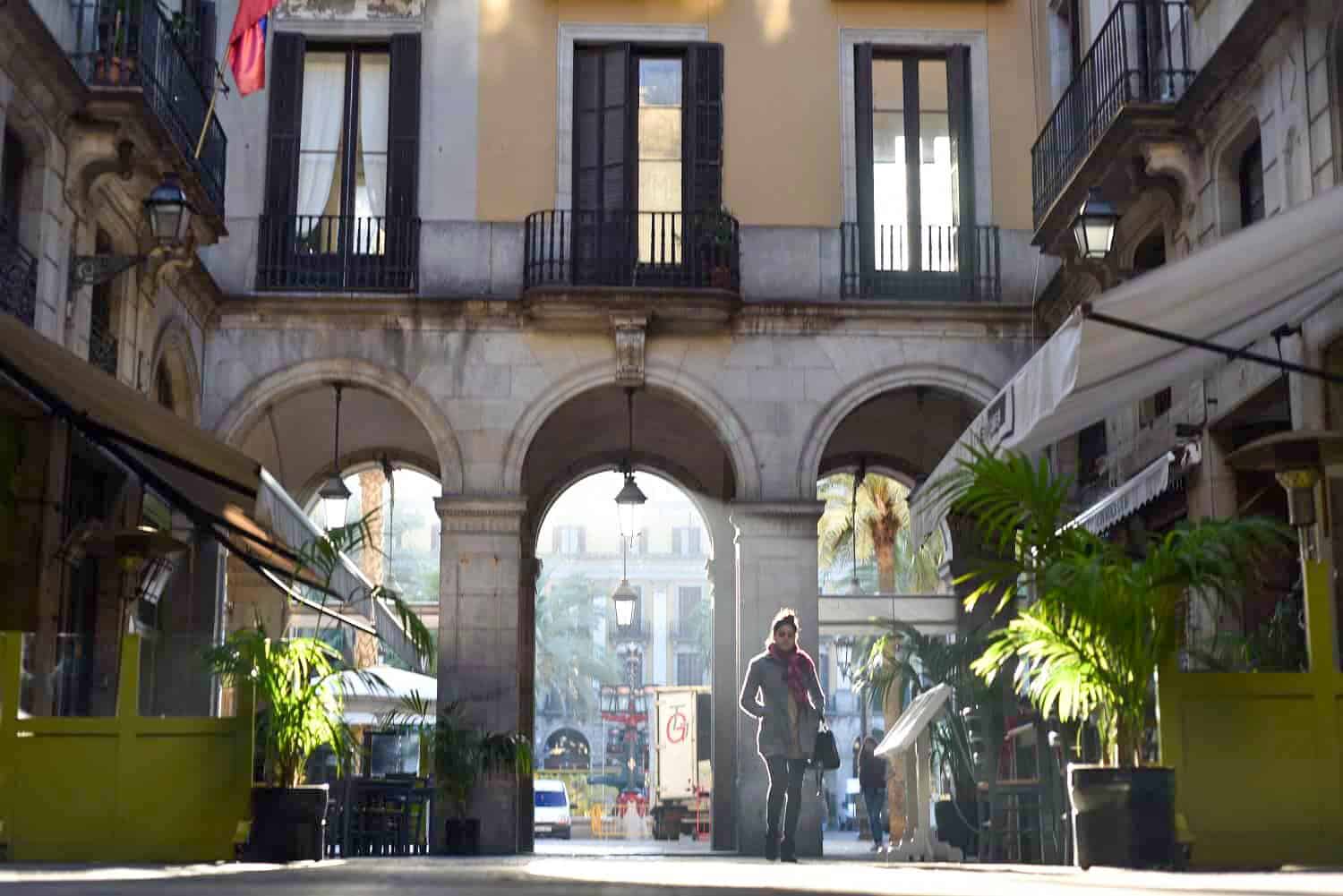This post may contain affiliate links.
Just off La Rambla in the heart of the Gothic Quarter, Plaça Reial is one of Barcelona’s most iconic public spaces. Palm trees, graceful neoclassical arcades, and ornate lampposts frame a lively scene of cafés, music, and street performers. Steeped in 19th-century elegance and Mediterranean vitality, the square is a magnet for both locals and visitors day and night.
From Convent to Civic Square
Plaça Reial was born out of Barcelona’s 19th-century efforts to modernize its medieval core. The site was originally home to the Capuchin convent of Santa Madrona, which was demolished during the ecclesiastical confiscations of the 1830s. In 1841, architect Francesc Daniel Molina i Casamajó won a competition to redesign the space. Drawing inspiration from French and Italian neoclassical plazas, he envisioned a grand, harmonious square that would bring order and beauty to the city center.
The square was inaugurated in 1848 and originally intended to honor King Ferdinand VII with a central equestrian statue. However, public resistance led to the plan being abandoned. Instead, the square was named Plaça Reial (Royal Square), and in 1876, the Fountain of the Three Graces was installed at its center.
Neoclassical Vision, Modern Revival
Plaça Reial exemplifies 19th-century neoclassical urbanism. It features symmetrical ochre-colored buildings with uniform arcaded facades, pilasters with Corinthian capitals, and wrought-iron balconies. The arcades not only provide architectural rhythm but also offer shaded walkways that house bustling cafés, bars, and restaurants.
One of the square’s most unique features is its pair of six-armed streetlamps, the first public works of a young Antoni Gaudí, installed in 1879 when he was just 27 years old. These ornate lampposts incorporate symbols of the Roman god Hermes, including winged helmets and serpents coiled around a caduceus, hinting at the organic forms that would later define Gaudí’s modernist masterpieces.
Despite its initial design for affluent residents, the apartments surrounding the square, known for their elegant interiors and lofty ceilings, lost favor after 1880 as wealthier citizens moved to newer areas like Eixample.
By the 1960s and ’70s, the square had gained a reputation for vice and neglect. However, a major renovation in 1982 by architects Federico Correa and Alfonso Milá sparked its revival. Today, Plaça Reial has reclaimed its place as a cultural and social centerpiece of the city.
Notable figures associated with the square include Gabriel García Márquez, the Nobel Prize-winning author, and Pasqual Maragall, former mayor of Barcelona and President of the Generalitat, who played a key role in bringing the 1992 Olympic Games to the city.
Community and Nightlife
Plaça Reial pulses with life at all hours. From early morning coffees to late-night cocktails, the square buzzes with activity. Its arcades shelter a mix of shops, tapas bars, and lively terraces, while Sunday mornings bring collectors together at the long-running coin and stamp market.
As night falls, Plaça Reial transforms into one of Barcelona’s premier nightlife destinations. Celebrated venues like Jamboree, Sidecar, and Ocaña offer everything from jazz and flamenco to electronic music and contemporary art. The square’s enclosed yet open atmosphere makes it ideal for both casual drinks and energetic dancing.
Throughout the year, Plaça Reial hosts a variety of cultural events and open-air concerts, particularly during La Mercè, Barcelona’s biggest festival, and on New Year’s Eve, when the square becomes a gathering point for celebration and music.
